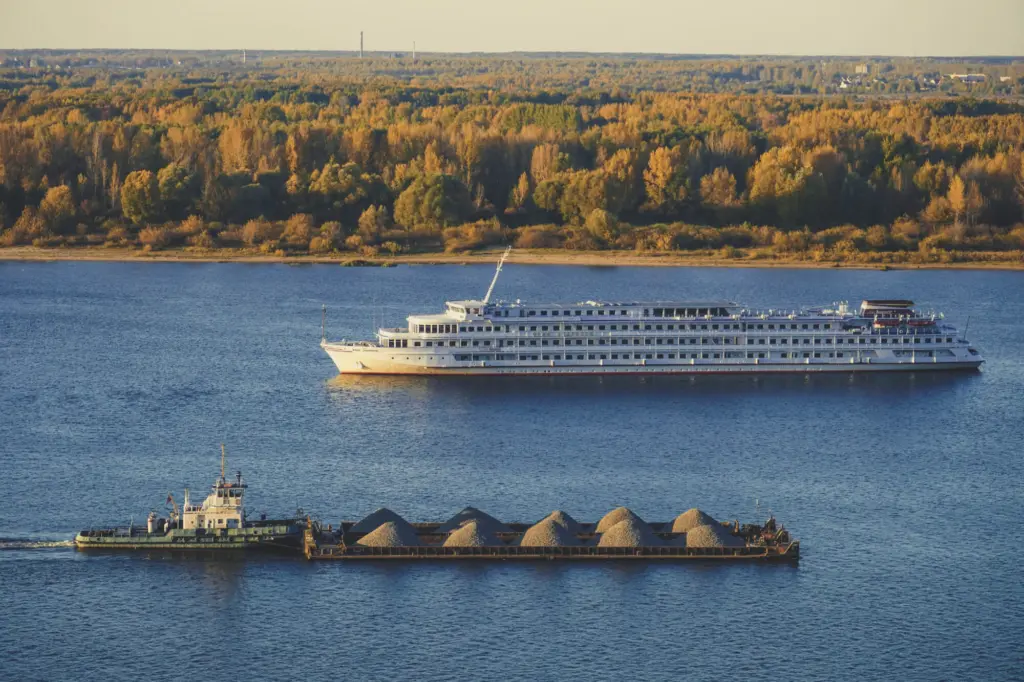Predicting the Unknown in River and Sea Transport
This article using vivid language introduces constraints of enhancing risk mitigation in inland navigation, which we have presented to a broad audience both as a White Paper and in collaboration with Thomas Miller, London. Understanding, Quantifying, and Mitigating Risks in River and Sea Transportensures Sustainability and Resilience of the Logistic Environment in Local, Regional, and […]Enhancing Risk Mitigation in Combined River Transport

This article using vivid language introduces constraints of enhancing risk mitigation in inland navigation, which we have presented to a broad audience both as a White Paper and in collaboration with Thomas Miller, London.
Combined river transport is an age-old method of transporting goods and people, serving as the lifeblood of many nations and economies. It harnesses the power of waterways, combining different modes of transportation to ensure seamless and efficient transfers. However, like any transportation mode, it comes with its share of risks. Understanding these risk exposures is pivotal to enhancing the efficiency of river transport and the safety, security and integrity of people, property, and other intangibles. Basically, you can categorise five domains of tangible risk exposure, whilst this essay is not even entering the complexity of risk exposure in the domain of combined river transport and enhancing risk mitigation.
Environmental Factors: The most obvious risk comes from Mother Nature herself. Rivers, being dynamic entities, are susceptible to changing water levels, currents, and weather patterns. Heavy rains can lead to flooding, affecting transport schedules and sometimes even causing harm to crew and passengers and damage to cargo and vessels.
Infrastructure Concerns: Combining different modes of transportation requires state-of-the-art infrastructure, including ports, docking facilities, and transfer points. Although it is beyond influence of shipping operators and freight forwarded, the awareness of its state and condition is paramount because inadequacy or neglect in maintaining these structures can lead to significant delays, accidents, and financial losses under the shipping contract and the underlying head contract.
Human Impacts: Like any other mode of transport, combined river transport is susceptible to impacts of human error. This can range from miscalculation in safety and security measures, misjudgement in navigating challenging areas of the river to mistakes in loading and unloading cargo.
Piracy, Damage and Theft: Though not as common as in oceanic transport, river transport is not immune to piracy, damage, and theft, especially in remote regions with less observation and control of the surroundings of a vessel.
Regulatory Challenges: Inland waterway transport regulations and risk reduction efforts can vary from region to region. Navigating these regulations can be complex and confusing, especially when it comes to transporting goods across borders and alignment of risk mitigation plans. Non-compliance not only leads to financial penalties, but it can also disrupt the transport chain and undermine an effective risk mitigation plan.
To mitigate these risks, it’s essential to invest in combined infrastructure, transport technology, and risk mitigation training. As the world moves towards more sustainable and efficient means of transportation, understanding and addressing the risk exposures becomes an essential factor for contributing to a safe and secure environment of combined river transport. The safety, security and integrity of people, property, and other intangibles and finally the environment rests on our ability to foresee potential hazards and risks in combined river transportation and to plan and prepare mitigations measure – by appropriate installations, adequate education and profound risk analysis and security assessment.




